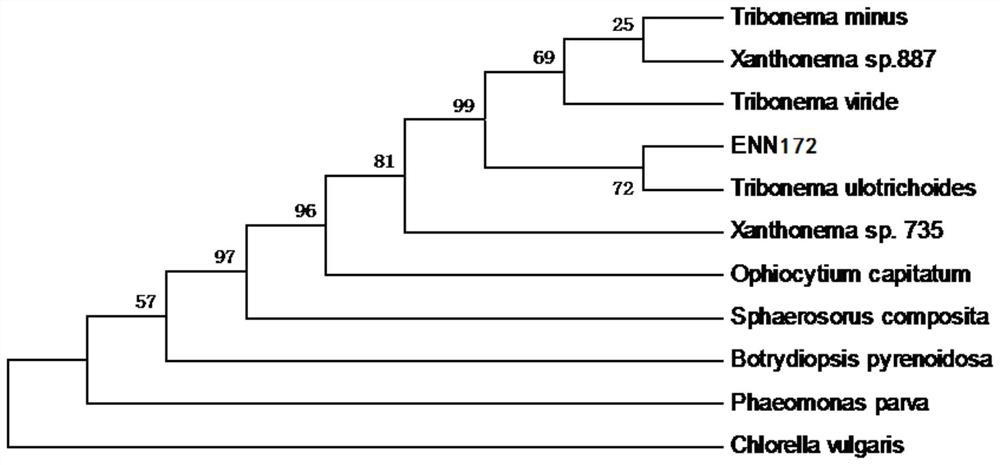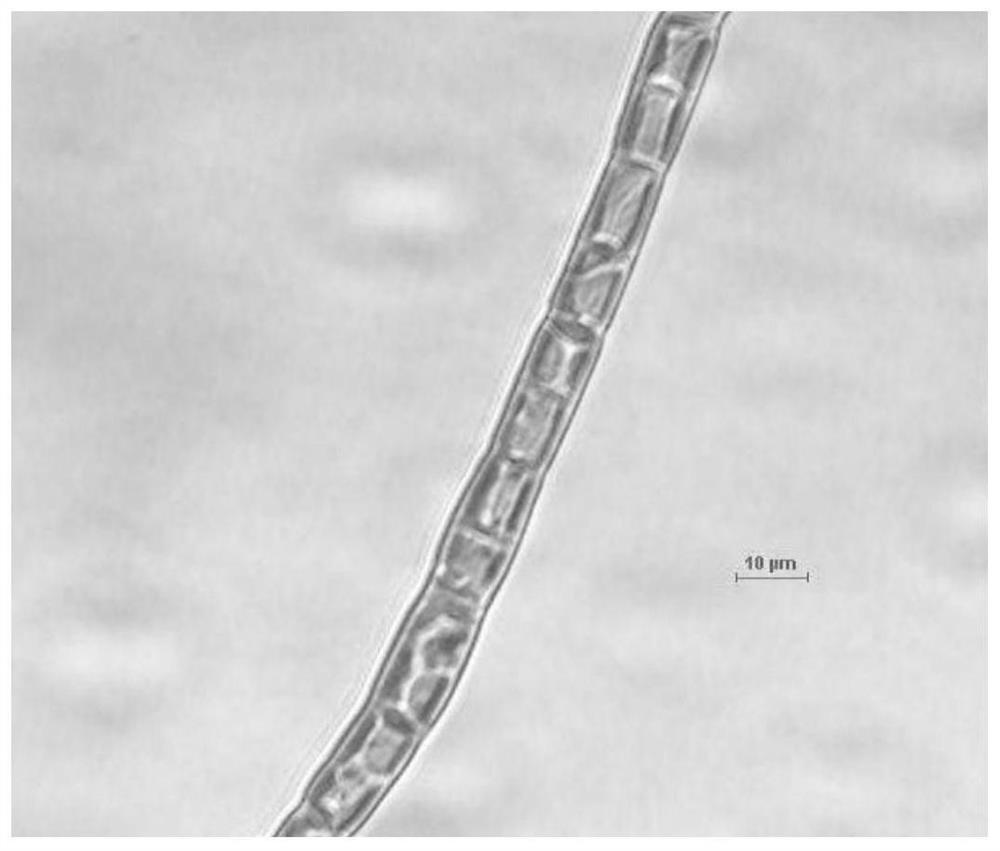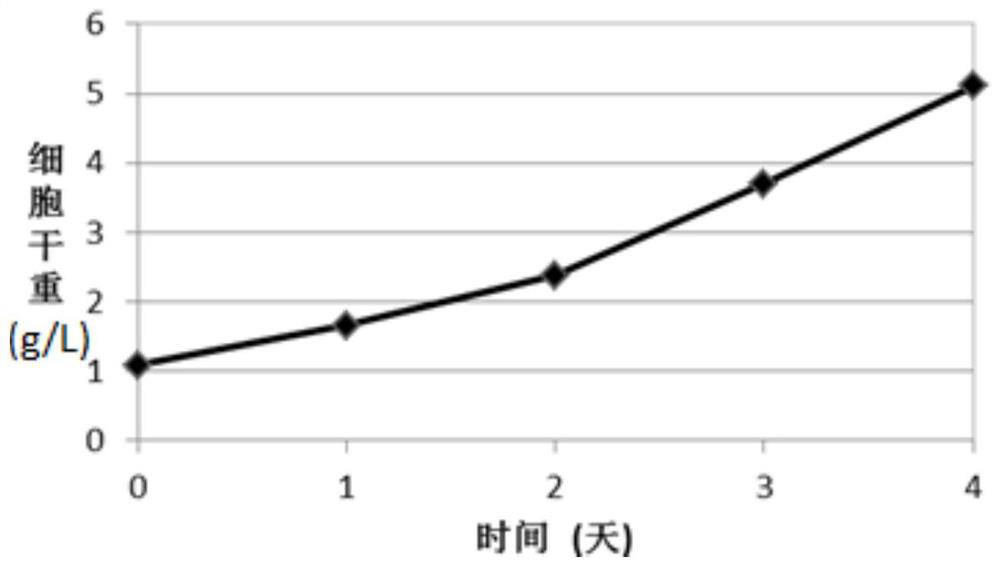A yellow silk algae and its cultivation and application
A technology of yellow silk algae and algae strains, applied in the fields of application, single-cell algae, biological water/sewage treatment, etc., can solve the problems of slow oil accumulation, unsuitable for production, and few research records, etc., and achieve fast oil accumulation Effect
- Summary
- Abstract
- Description
- Claims
- Application Information
AI Technical Summary
Problems solved by technology
Method used
Image
Examples
Embodiment 1
[0034] Example 1 Screening and molecular identification of Xanthophyllum ENN172
[0035] 1. Screening of Xanthophylla ENN172 (Tribonema sp.)
[0036] In autumn, water samples were taken from lakes in northeastern Inner Mongolia. In the laboratory, BG11 medium diluted 1 / 10 was added to the water samples, enriched and cultured for 2-3 days under natural light and room temperature, and treated with sterile deionized water. The samples were diluted, and single algae filaments were taken for purification and culture in a 24-well plate. The medium was BG11 medium, the culture temperature was 25°C, and the light was natural light. The purified algae filaments in the orifice plate were transferred to the Erlenmeyer flask for expansion culture, and finally the pure algae strain of ENN172 was obtained.
[0037] Table 1BG11 medium composition
[0038] Substance name Dosage per liter of deionized water NaNO 3 (sodium nitrate)
1.5g K 2 HPO 4 ·3H 2 O(dipota...
Embodiment 2
[0062] Indoor cultivation of embodiment 2ENN172 algal strain
[0063] In a column reactor with an inner diameter of 5cm and a height of 60cm, use sterile BG11 medium for cultivation, the cultivation temperature is 25°C, the initial inoculum concentration is about 1g / L, and the mixture of filtered air and carbon dioxide is introduced. Gas, wherein the content of carbon dioxide is 1-2% of the total amount of mixed gas. The initial light intensity is 120umol / m 2 / s, according to the growth of biomass in the later stage, the light intensity is increased to 200 umol / m 2 / s. Samples were taken every day to determine the biomass and fatty acid content in the cells, and the cells were cultured for 4 days in total.
[0064] Biomass measurement method: Accurately measure 50mL of algae liquid, filter it with a glass fiber membrane (pore size of 0.45um) with a known initial weight after drying, rinse with 150mL of deionized water three times to remove ash, and then remove the algae cel...
Embodiment 3
[0066] The oil production of embodiment 3ENN172 algae strain
[0067] Insert the ENN172 algae at the end of the exponential growth stage into a column reactor with an inner diameter of 5 cm and a height of 60 cm. The initial inoculum amount of algal cells is about 1.5 g / L. The medium used is BG11 medium lacking nitrogen and phosphorus. The temperature is 25°C, and the initial light intensity is 150umol / m 2 / s, the subsequent light intensity is gradually increased to 200umol / m 2 / s, other parameters are the same as in Embodiment 2. Samples were taken every day to measure the fatty acid content in the cells, and the biomass was measured every two days for a total of 4 days of culture. The results are shown in 4.
[0068] Fatty acid composition and content determination method: Weigh 25 mg of freeze-dried sample, add 2 mL of 2% H 2 SO 4 Anhydrous methanol-toluene solution. After filling with nitrogen, heat at 80°C for 2 hours. Afterwards, 1 mL of pure water and n-hexane wer...
PUM
 Login to View More
Login to View More Abstract
Description
Claims
Application Information
 Login to View More
Login to View More - R&D
- Intellectual Property
- Life Sciences
- Materials
- Tech Scout
- Unparalleled Data Quality
- Higher Quality Content
- 60% Fewer Hallucinations
Browse by: Latest US Patents, China's latest patents, Technical Efficacy Thesaurus, Application Domain, Technology Topic, Popular Technical Reports.
© 2025 PatSnap. All rights reserved.Legal|Privacy policy|Modern Slavery Act Transparency Statement|Sitemap|About US| Contact US: help@patsnap.com



